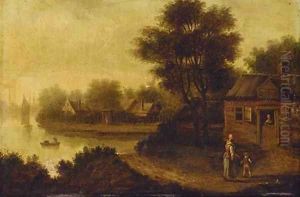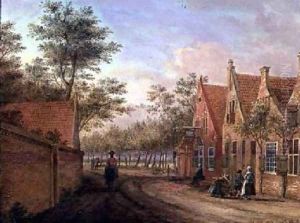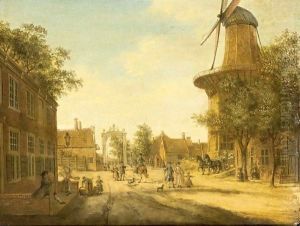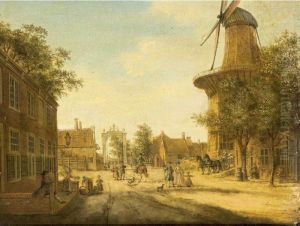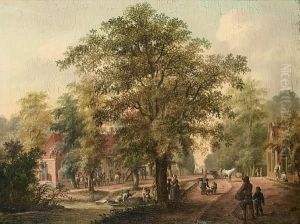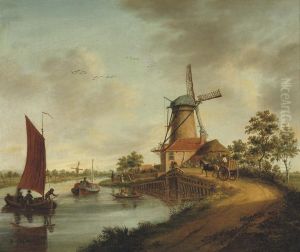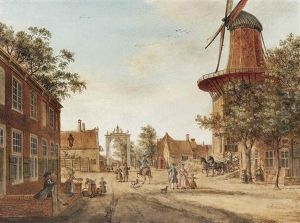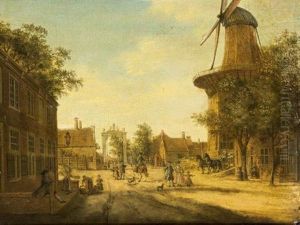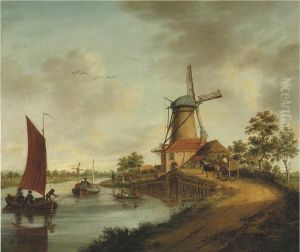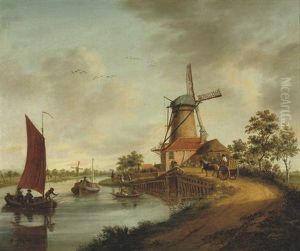Jacob Elias La Fargue Paintings
Jacob Elias La Fargue, born in 1736 and passing away in 1805, was a Dutch painter and draughtsman known for his meticulous cityscapes, landscapes, and genre scenes. His work provides a fascinating glimpse into the 18th-century life, capturing the architectural beauty and urban vibrancy of the Netherlands during this period. La Fargue was part of a family of artists, which significantly influenced his artistic direction and development from a young age.
Operating primarily in The Hague, La Fargue's artistry was deeply intertwined with the cultural and social fabric of the Dutch Republic. He was particularly adept at portraying the elegance and detailed architectural features of Dutch cities, often infusing his works with a sense of calm and order that was reflective of the Enlightenment ideals of his time. His landscapes and cityscapes are characterized by their acute attention to detail, vibrant color palette, and the ability to capture the changing effects of light and atmosphere.
Beyond his cityscapes, La Fargue also produced a number of genre scenes, illustrations, and portraits, showcasing his versatility as an artist. His genre scenes are particularly noted for their narrative quality, offering insights into the daily lives and social customs of his contemporaries. Despite the high quality of his work, La Fargue did not achieve significant fame during his lifetime, and his contributions have often been overshadowed by his contemporaries. However, his artworks remain valued for their historical significance and their role in documenting the urban and social landscapes of 18th-century Netherlands.
Today, Jacob Elias La Fargue is recognized for his contribution to Dutch art history, with his works held in various museums and collections around the world. His legacy is that of a skilled observer of his time, capturing the essence of Dutch society and its environments with precision and beauty.
